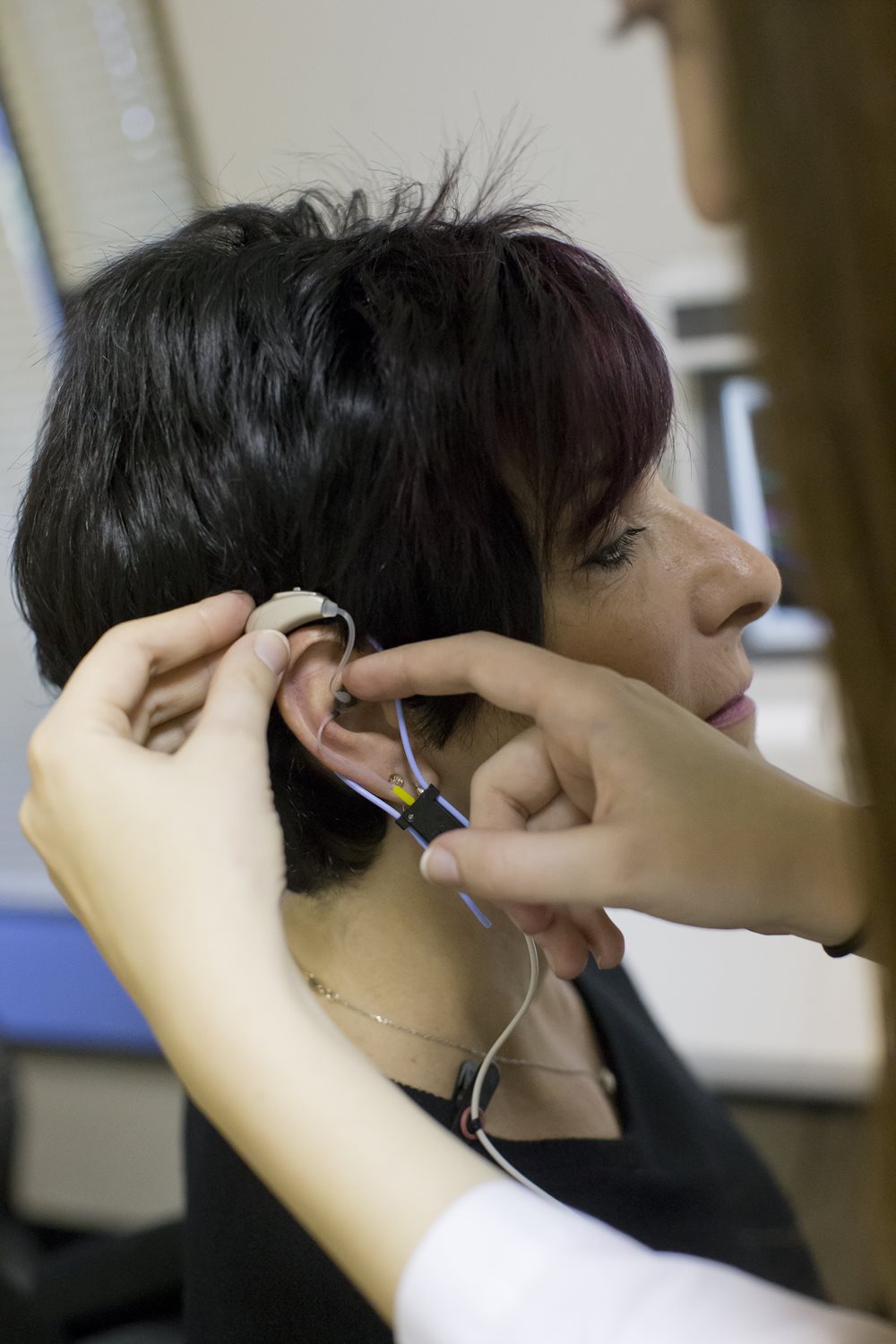Masks Make Communication Difficult For The Hard-Of-Hearing
KYW News Radio and Megan Frank for PBS39 recently interviewed Dr. Lindsay Bondurant, director of the Pennsylvania Ear Institute on the problems facing people with hearing loss in the age of face masks. Below is the PBS interview.
For people who have hearing loss, communicating with a person wearing a face mask can be challenging.
''When people are wearing masks it eliminates some of the acoustic cues that we use to understand what people are saying,'' explained Lindsay Bondurant, an audiologist and director of the Pennsylvania Ear Institute at Salus University.
 She says many people rely on lip reading to communicate.
She says many people rely on lip reading to communicate.
''I think people don’t realize how much we all rely on those facial cues,'' said Bondurant. ''You feel like you can hear people better if they turn around and face you. It hasn’t changed you’re hearing. It’s that your brain uses those cues to understand what is being said.''
Bethlehem resident Christina Derhammer, who is deaf, is using an accessibility app that performs real-time transcription of speech. She spoke to PBS39 through a sign language interpreter.
''I think about all of my different hard of hearing friends and that includes deaf blind people. We all have to wear masks, which can be difficult,'' said Derhammer, who runs an online community hub for the deaf called Deaf Connection. ''It’s tough because we rely on lip reading. I’m using gestures a lot more, that’s part of ASL - American Sign Language. I found an app that I can use called Live Transcribe. It’s great. We have to learn to be patient and to adapt to what’s going on to work together in a better way to improve our circumstances.''
DIGITAL TIPS
In addition to accessibility apps, Bondurant also suggests utilizing a digital device like a smartphone or tablet to type messages to people wearing masks.
''They can write a message down, use their phone, really whatever it takes to get that message from one person to the other,'' said Bondurant.
Mark Demko, a spokesperson for ArtsQuest in Bethlehem, has slight hearing loss. He says he’s also using technology when needed.
''I've been using a hearing aid for decades,'' said Demko. ''Right now, I think there’s an opportunity to embrace all types of technology. If you find a platform or a communication device that helps, you should use it. I prefer for Zoom and Skype calls that people use the video function, because people with hearing disabilities have learned to read lips and it helps when they can see you.''
PRACTICAL TIPS
If you’re communicating with a person who has hearing loss, remember to:
- Speak slowly, clearly and at normal volume
- Face each other when you talk at a safe distance
- Rephrase remarks when they’re not understood
Bondurant also pointed out that wearing face masks and hearing aids are a tricky combination.
''We’re finding that the elastic mask strap can flip the aid out,'' explained Bondurant. ''So we’re getting more reports of lost and damaged hearing aids. If possible, people should switch to a mask that ties behind the head.''
She says people may also consider purchasing a face mask with a clear panel over the mouth area.
COMMUNICATION CARDS
The Pennsylvania Office for the Deaf and Hard of Hearing created a printable ‘’communication card’’ that people can present to others to alert them to any hearing loss needs. Visit their website to view and print the card.